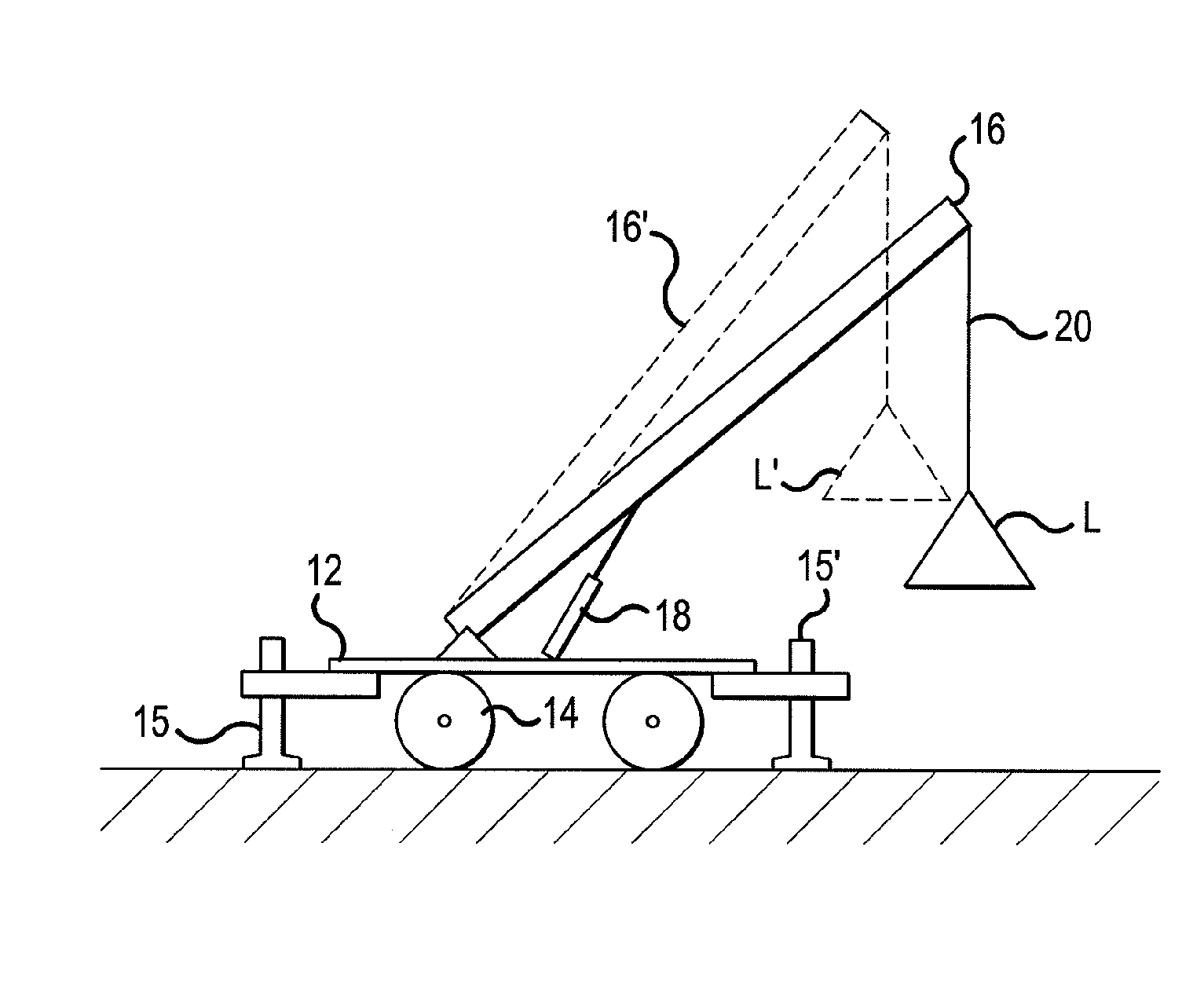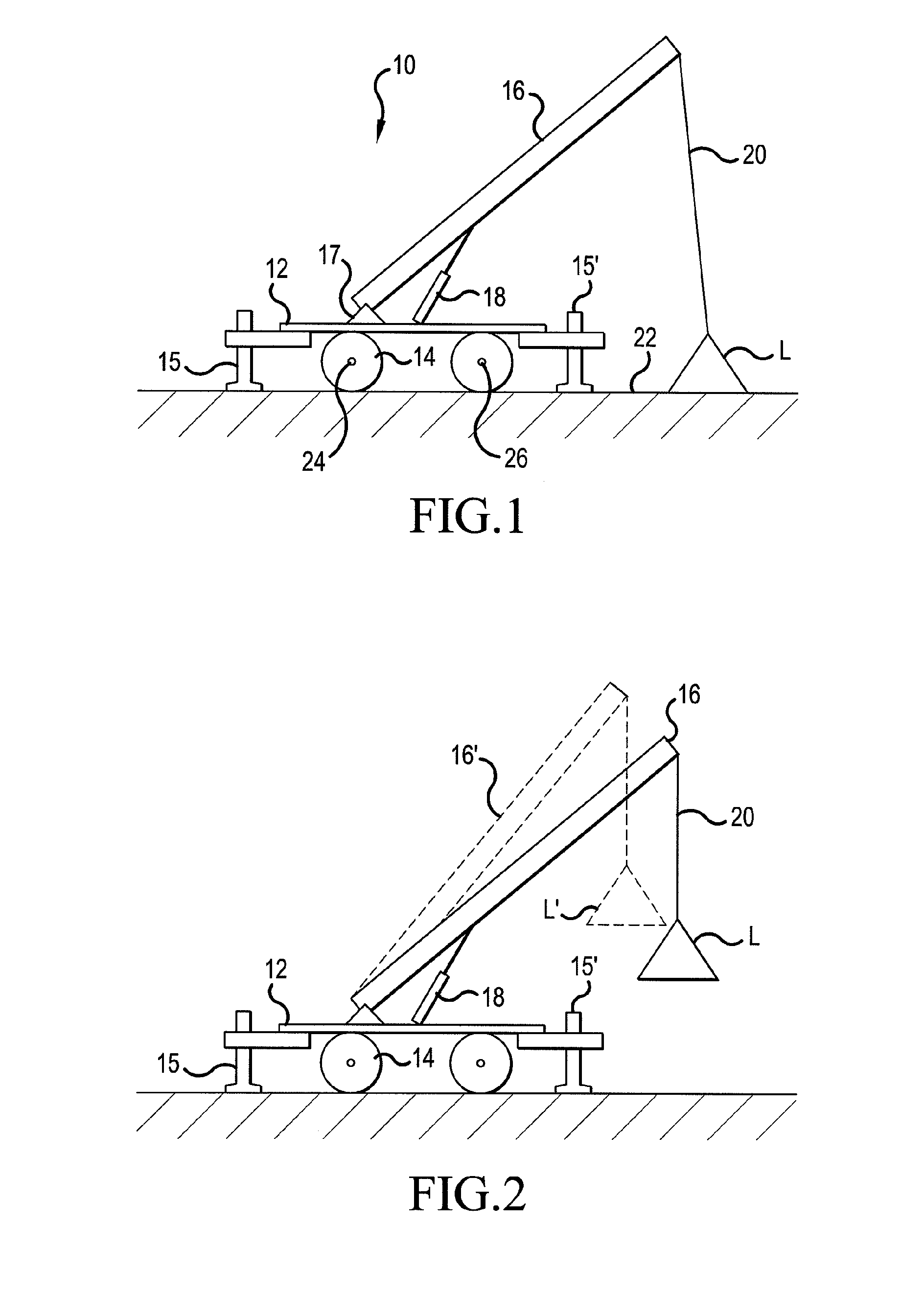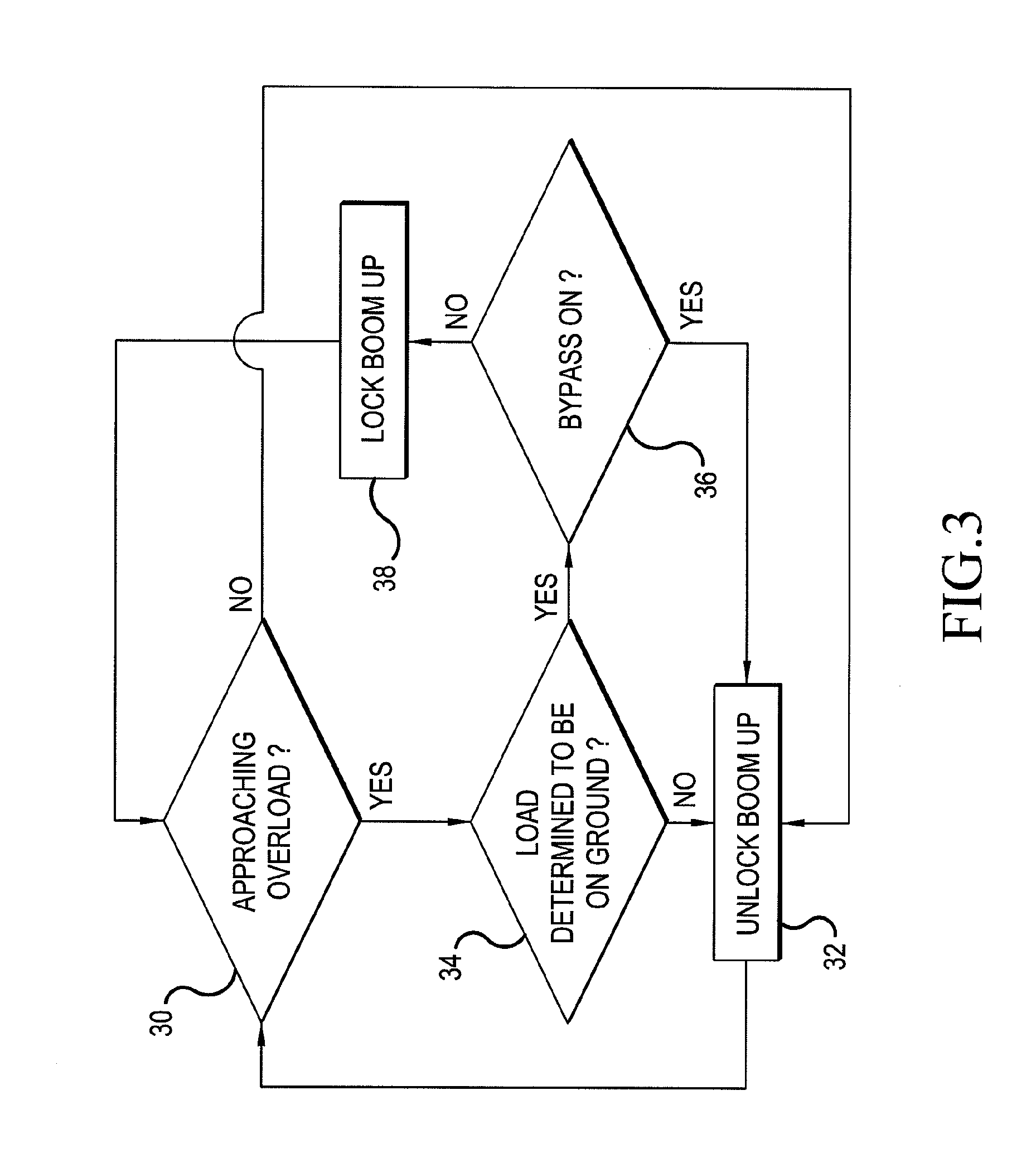Load monitoring and control system with selective boom-up lockout
a monitoring and control system technology, applied in the direction of load-engaging elements, safety gear, cranes, etc., can solve the problems of varying the limit of the permissible range of movement of the crane and its load, the load may be too heavy, and many cranes are not equipped with lmi systems, so as to achieve the effect of reducing the condition
- Summary
- Abstract
- Description
- Claims
- Application Information
AI Technical Summary
Benefits of technology
Problems solved by technology
Method used
Image
Examples
Embodiment Construction
[0016]FIG. 1 schematically illustrates a crane 10. The crane comprises a base 12 typically supported on, for example, a pair of wheels 14. Various cranes may be supported upon tracked transport means. During lifting operations, many cranes employ, for example, outriggers 15, 15′ for providing a wider and more stable support base for the crane, counterweights (not shown), etc. Other configurations of cranes are known, and the invention is not limited to the example schematically illustrated.
[0017]A crane typically includes a boom 16 which is pivotally connected to the base of the crane in the vicinity of point 17, and which may be raised and lowered by a lift cylinder 18. The cylinder 18 is operated by hydraulic means, as is well known. A cable 20 is provided for lifting loads, represented in FIG. 1 as L. A hook (not shown) is typically provided for engaging the load, which is raised and lowered by taking in and paying out cable 20 via a powered winch (not shown) in a well known mann...
PUM
 Login to View More
Login to View More Abstract
Description
Claims
Application Information
 Login to View More
Login to View More - R&D
- Intellectual Property
- Life Sciences
- Materials
- Tech Scout
- Unparalleled Data Quality
- Higher Quality Content
- 60% Fewer Hallucinations
Browse by: Latest US Patents, China's latest patents, Technical Efficacy Thesaurus, Application Domain, Technology Topic, Popular Technical Reports.
© 2025 PatSnap. All rights reserved.Legal|Privacy policy|Modern Slavery Act Transparency Statement|Sitemap|About US| Contact US: help@patsnap.com



